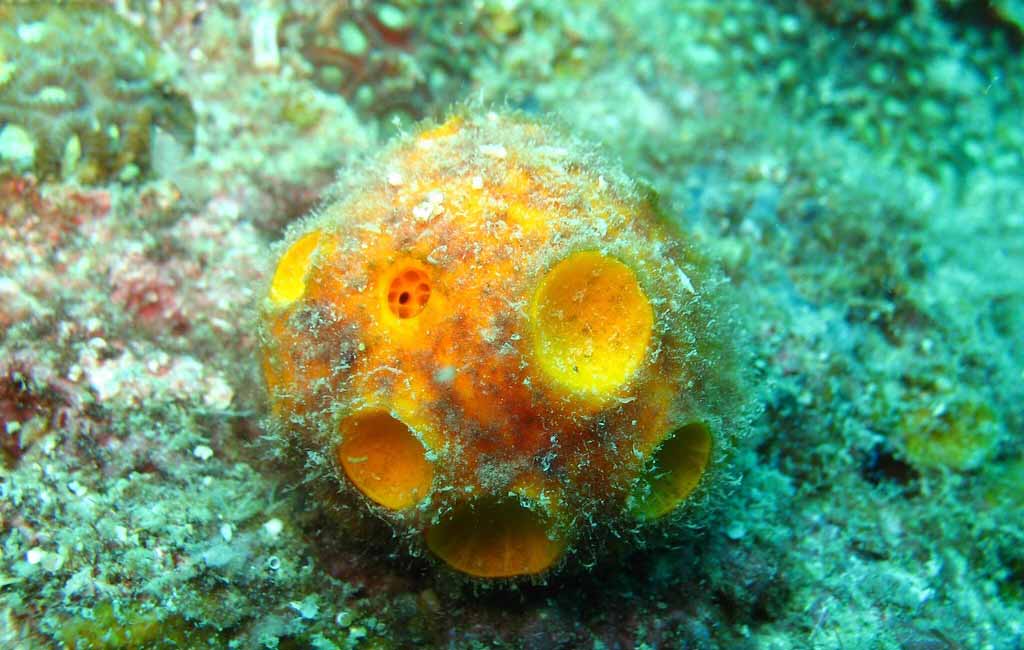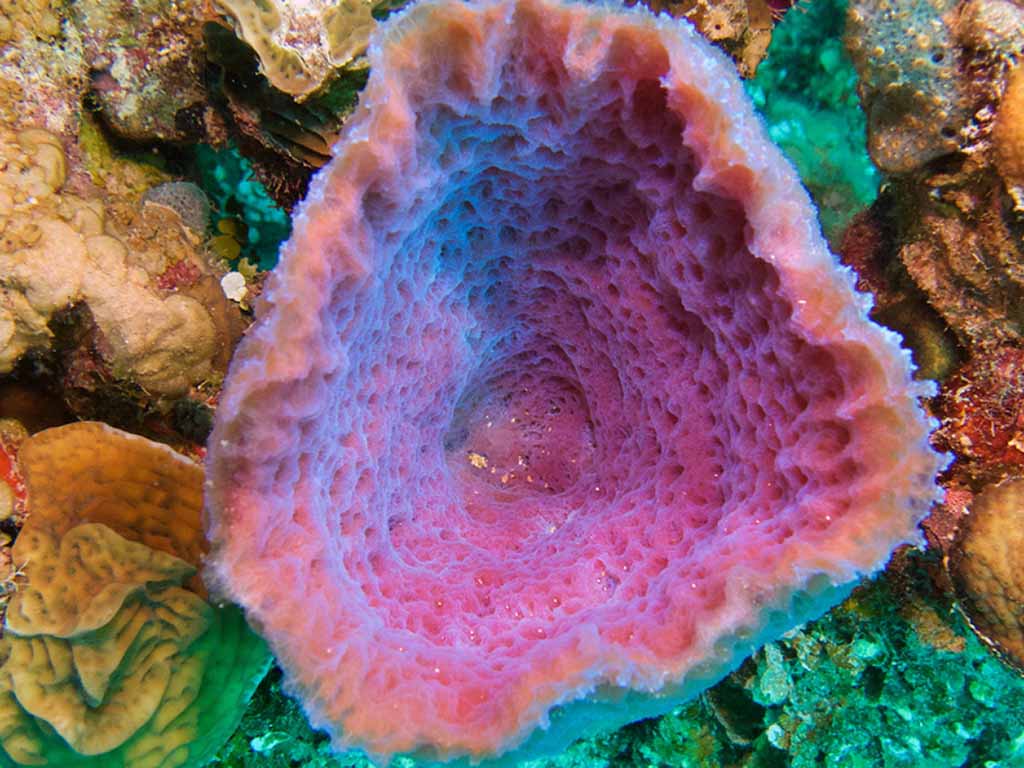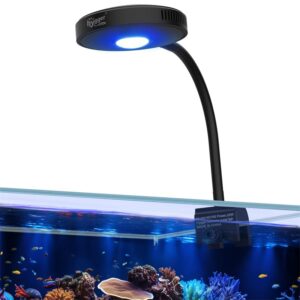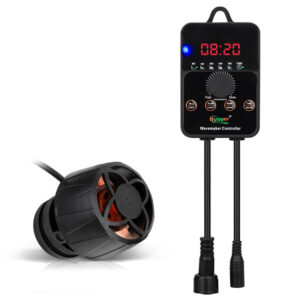Spongefish or sponges are unique and among the oldest marine creatures. They have a unique and simplest body structure. In the following, you’ll learn what is a sponge fish, i.e., whether it is an animal or plant. Its characteristics and total species in the world. Interesting sponge fish facts are also worth learning aspects, discussed in the following.
Content Table
What Is a Sponge Fish?
Spongefish or sponge corals are saltwater animals, but not fish. These marine invertebrates are classified under the phylum Porifera. They are among the first animal groups that evolve on Earth. Spongefish are hollow cylinders with large openings.
Why Are They Animals?
Previously, they were classified as plants. However, they now fall under the animal category for various reasons. Here are the reasons why they fall under animals.
| Have a multicellular body | Lack of a cell wall | Consume organic material instead of growing their food |
Their name comes after the structure, as they have a porous body with no nervous system. They are immobile and always remain attached to the seabed, and use their sponge body to strain water for nutrients and organic particles for their growth. Sponges reproduce sexually and asexually.
Their presence is necessary for coral reefs. These sponges filter water, avoiding temperature, light, and nutrient fluctuation around the corals. Moreover, they provide shelter to fish and many other marine species.
Sponge Fish Characters
Here are a few characteristics of sponge fish that will allow you to know more about them.
- Their body is a network of pores and channels, with no complex organs or true tissues. They grow in an irregular cylindrical shape with a large central cavity.
- Larvae can move around the water, although not at a greater distance. They move because of the cilia on their body. However, adult sponge fish are sessile, i.e., they can’t move and always remain attached to the seabed.
- Their body consists of ostia and oscula, i.e., pores and canals. They intake water with ostia and exit it through oscula, i.e., canals or large openings. With this structure, they strain water from organic matter particles.
- They create water currents with flagella, i.e., specialized cells.
- Spongefish can regenerate lost parts.
- They have coloration according to the surrounding sponges and grow around the coral reefs.
- They feed on plankton or microorganisms living on them.
- Sponges have a symbiotic relationship with fish. Fish take shelter, and in return, fish clean their surface from parasites. This cleanliness improves the water circulation through pores.

Sponge Fish for Aquarium
Life In the Saltwater Aquariums
If you are a veteran and experienced aquarist, you can keep sponge fish in a saltwater aquarium. They require exceptional living conditions and care. Here are optimal care and growth factors for sponge fish.
Water Quality
Always keep them in pristine quality water as they are sensitive.
| Factor | Value |
| Specific gravity | 1.023 – 1.025 |
| Water temperature | 72–78°F |
| pH | 8.1 – 8.4 |
| Ammonia | 0 |
| Nitrite | 0 |
| Nitrate | Almost zero |
Flow Rate
Sponges intake their food and oxygen from the water. Therefore, maintain a moderate flow rate in the tank so they can effectively filter water for food and oxygen.
Feeding
They feed on microscopic particles of algae and plankton and consume them by filtering the water. Add zooplankton and phytoplankton to the tank to ensure their proper diet. It’ll result in optimal growth.
Lighting
Their natural habitats have low lighting. Therefore, they don’t need high or intense lighting for optimal growth. If possible, install dim lights. Otherwise, keep them away from intense lighting spots in the tank.
Care
| Avoid air contact, even though it is very slight. | No strong water currents and rough handling |
| Always maintain the water quality. | Avoid adding fish that can harm the sponges |

Sponge fish
How Many Sponge Species in the World?
There is one of the earliest living organisms, has about 8,550 living sponge species. They are classified into 4 classes.
| Class | Population |
| Demospongiae | 90% of entire sponges |
| Hexactinellida | Rare glass sponges |
| Clacarea | Calcareous sponges |
| Homoscleromorpha | Rarest, about 117 different species |
The Facts About Sponge Fish
Here are some sponge fish facts that help you learn more about the sponge:
- They belong to the phylum Porifera, which means pore-bearer.
- They are among the simplest, multi-cellular living beings on the Earth, and have been for about 5000 million years.
- Sponge has about 8,500+ species, along with 200 freshwater species, they are animals but not fish.
- They are filter feeders that don’t have a heart and brain, i.e., filter the water to ingest microscopic organic particles from water, filtering about 20,000 times the water’s volume daily compared to their volume.
- Sponges are essential for the marine ecosystem.
- They act as carbon sinks, i.e., absorb water’s carbon dioxide.
- Some species feed on time crustaceans.
- Young sponges can move up to a certain distance. However, adults are immobile.
- Some sponge species have spiny spicules, a defensive mechanism. Protein, sponge, and calcium carbonate are the building blocks of these spiny spicules.
- The sponge size depends on how efficiently a sponge filters water.
- They belong to hermaphrodites, i.e., reproduce sexually and asexually.
- Sponge larvae have tiny hairs, i.e., cilia. These tiny hairs propel them to a suitable habitat.
- Some sponge species have about a 200-year lifespan. Some living sponges are 5,000 years old.
- Their size varies from 3 cm to 2 meters.
- The largest known species, i.e., the Monoraphus sponge, is 4 meters wide.
- They are distributed throughout the world and found at varying depths.
- Sponges have iodine that is used for medical purposes.
- Some sponges have potential cancer-curing ingredients.
Species of Fish Eat Sponges
Several fish species eat sponges. Here is a list of such fish species.
| Queen angelfish | Emperor angelfish | Wrasses | Box fishes |
| French angelfish | Gray angelfish | Leather jackets | Guinea fowl puffer |
Closing Remarks
Spongefish are the simplest marine animals that have been on the earth for millions of years. They extract their food from the water and help to maintain the marine ecosystem. Usually, they grow around the coral reefs and have symbiotic relations with a few fish. Moderate flow, low light, high care, and pristine water quality promote their growth in the tank. With many interesting facts, you can keep them in your tank.


Leave a comment